.:: CASIO F91W Water Test ::.
Testing the CASIO F91W for water resistance
PROJECT GOALS:
There were rumors going around that the water resist label on the CASIO meant that you can only get splashes on the watch and maybe wear it in rain. People said that you can't swim or shower with them. This to me was some what disappointing because the A168 CASIO is my favorite retro watch, but I always felt bad that I couldn't shower with it.
The purpose of this project is to determine if the CASIO F91W watch and its siblings can withstand water submersion. During the test, the watch will be submerged 5.5 inches in tap water.
I will also be pressing the buttons while the watch is submerged, in order to test the most vulnerable part of the watch.
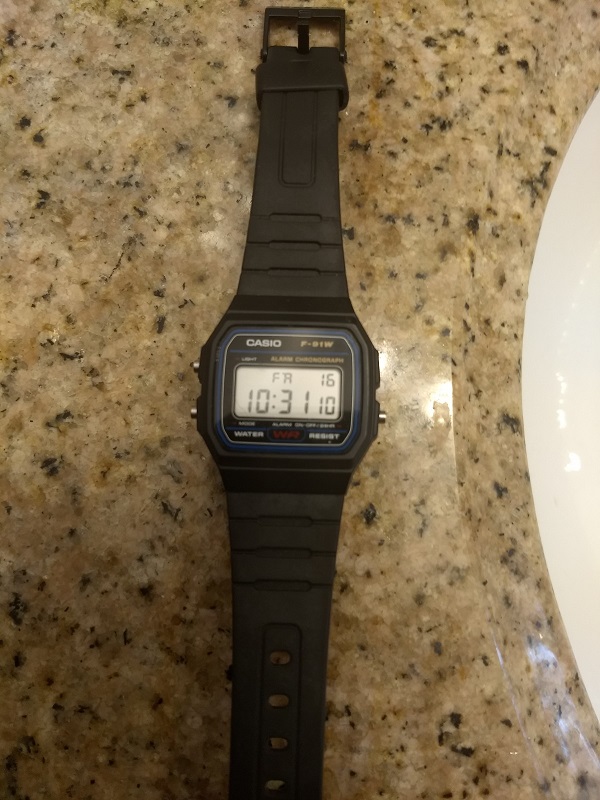
Here is a photo of the CASIO F91W. This watch came out in 1991 and has been around since. CASIO still sells around 3 million F91W's every year! There are other CASIO's that have the same type of construction and interface. Some examples are... F94W, F105W, A158, A168, and many more.
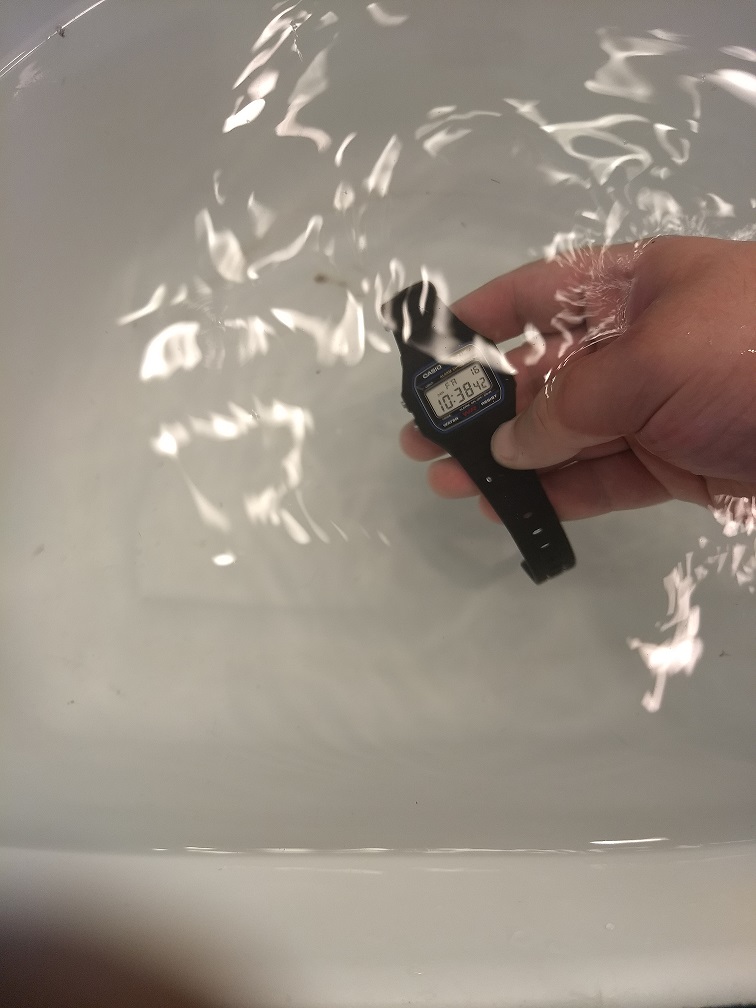
Here is the watch submerged in 5.5" of cold tap water. I let the watch sit for 2 hours and pressed the buttons on it once every few minutes. I did not see any bubbles which was a good sign. After the test was over, there was no condensation or water in the case display. Now I need to take the watch appart and look to see if water got in anywhere else.
What is used in order to make the CASIO F91W water resistant?
Lets take it appart and see! ...
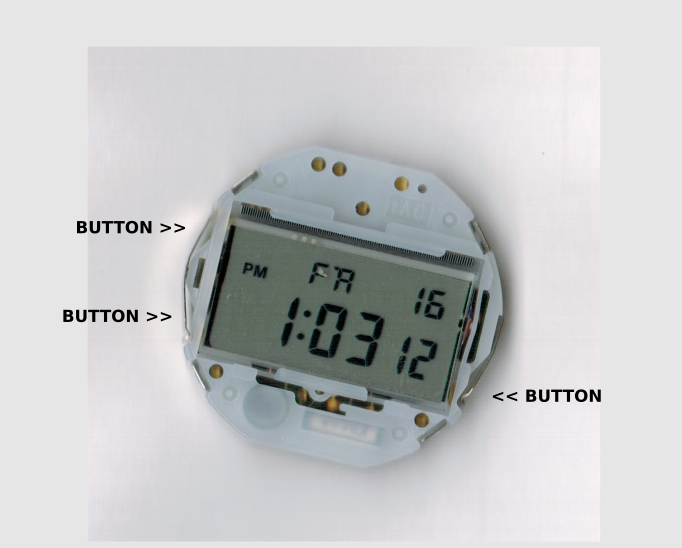
Ok, so I removed the module out of the chassis. Turns out the buttons on the module itself are just strips of stainless steel which when pressed makes contact with another piece of metal. This part was obviously not water resitance which lead me to assume that the magic happens in the resin case itself...

Here is a side view of the module buttons.
Ok, so now lets look at the resin case. This is obviously what the buttons look like on the outside. Nothing special here.
This is how the buttons look inside of the chassis. You can see that the button diameter inside is smaller than the button diameter on the outside. (thick part: 2.5mm diam / thin part: 1.6mm diam). When pushing the buttons in and out you can feel a weak friction force, which is a good sign, since it leave no gap for water to get inside.
Ok so this was very interesting, but I was left unsettled. Does tight fit alone prevent water from going in? I did not like this idea... so on a whim I decided to hack saw the chassis and remove the buttons, in order to inspect them closer... and VOILA!!! A mirriacle... Turns out there is a gasket on the button shaft!!! This is indeed hard proof that this watch was designed to keep water out. On top of that the back plate has a gasket as well, but we knew that already.
A macro shot of a CASIO F91W button.
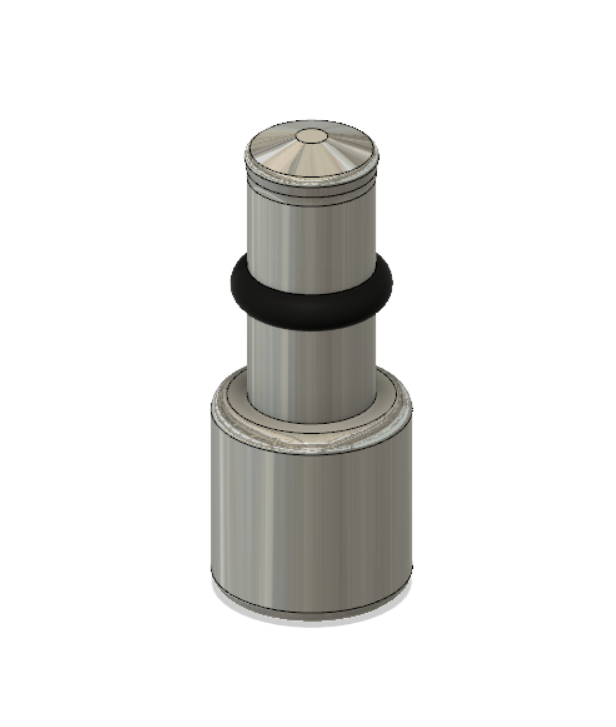
3D rendering of a CASIO F91W button.
IN CASE YOU WERE WONDERING WHAT 200 METER WATER RESISTANT BUTTONS LOOK LIKE...

CASIO G-SHOCK GW-5000 Button (200 meter water resistance) --- Thanks to "acadian" from the watchuseek forum for the photo. ---
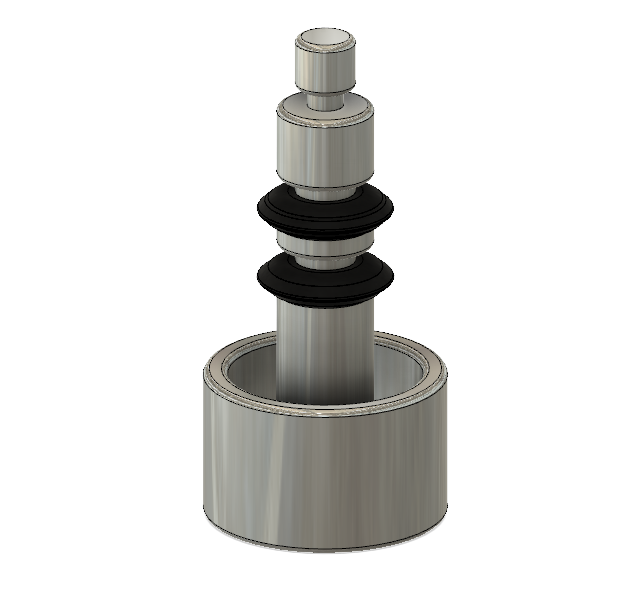
CASIO G-SHOCK GW-5000 Button (Render #1)
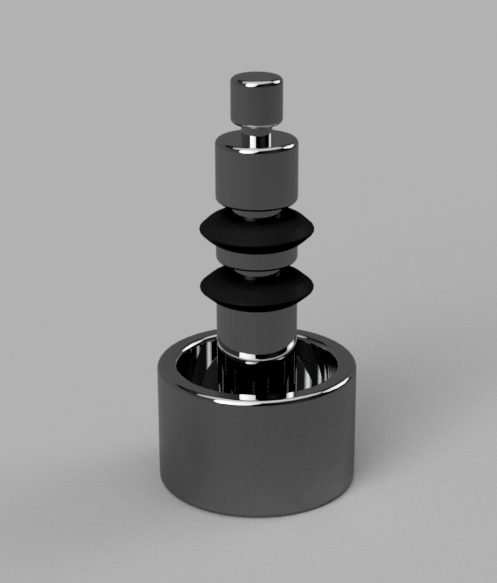
CASIO G-SHOCK GW-5000 Button (Render #2)
SOME MORE WATCH BUTTONS...

CASIO AE-1200 Button (100 meter water resistance) --- Thanks for the photo, Michael Escay (Facebook CASIO group).
CASIO AE-1200 Button (Render #1)
OTHER THINGS TO CONSIDER

The gasket is not the only thing that keeps water from coming into the watch. If the walls of the button holes are not smooth then water can get stuck in the grooves. When the button goes in, water will fill the grooves in the button hole, and then when the button comes back out, the water in the grooves will end up in the watch.